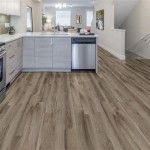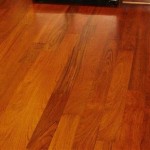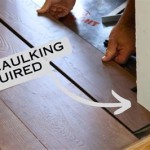How To Change A Damaged Laminate Floor Board
Laminate flooring offers an attractive and cost-effective alternative to hardwood. However, it is susceptible to damage from scratches, dents, and moisture. Fortunately, replacing individual damaged planks is typically a manageable DIY project, preserving the overall aesthetic of the floor without requiring a full replacement. This guide outlines the tools and techniques required to successfully replace a damaged laminate floorboard.
Tools and Materials
Gathering the necessary tools and materials beforehand streamlines the replacement process. This preparation ensures a smooth and efficient repair.
- Replacement Laminate Plank: Ensure an exact match with existing flooring.
- Pull Bar: Essential for removing the damaged plank.
- Tapping Block: Protects the edges of the planks during installation.
- Hammer: Used in conjunction with the tapping block.
- Utility Knife: Used for scoring and cutting the damaged plank.
- Safety Glasses: Protects eyes from debris during the removal process.
- Measuring Tape: Ensures accurate cutting of the replacement plank.
- Pencil: For marking cut lines.
- Vacuum Cleaner: Clears debris from the area before installing the new plank.
Locating the Damaged Plank
Precisely identifying the damaged plank is crucial before beginning the repair. This step prevents unnecessary disruption to surrounding planks.
- Visually Inspect: Carefully examine the floor for the specific damaged plank.
- Isolate the Area: Clear the area surrounding the damaged plank of furniture and obstacles.
Removing the Damaged Plank
Removing the damaged plank requires careful technique to minimize impact on adjacent boards.
- Score the Plank: Use a utility knife to score the damaged plank along its length and width. This helps prevent splintering during removal.
- Break Apart the Sections: Carefully break the scored plank into smaller, manageable sections.
- Remove the Pieces: Starting at the edge of the room, use the pull bar and hammer to carefully lift and remove the broken pieces.
- Clear the Area: Remove any remaining underlayment or debris from the exposed subfloor.
Preparing the Replacement Plank
Proper preparation of the replacement plank ensures a seamless fit and finish.
- Measure and Cut: Measure the space where the damaged plank was and cut the replacement plank accordingly. Ensure a precise fit.
- Remove the Tongue and Groove: On the long side of the replacement plank that will be inserted first, use a utility knife to carefully remove the bottom lip of the tongue. This allows for easier insertion.
Installing the Replacement Plank
Careful installation is vital for a stable and level floor surface.
- Angle and Insert: Angle the long edge of the replacement plank into the existing flooring, ensuring the tongue engages with the groove of the adjacent plank.
- Lower and Lock: Carefully lower the replacement plank into place, ensuring it sits flush with the surrounding flooring.
- Tap into Place: Using the tapping block and hammer, gently tap the short end of the replacement plank to lock it into the adjacent planks.
- Check for Stability: Ensure the replacement plank is securely in place and level with the surrounding floor.
Cleaning and Finishing
Proper cleaning removes debris and ensures a finished look.
- Vacuum the Area: Remove any dust or debris created during the installation process.
- Inspect the Repair: Conduct a final visual inspection to ensure the replacement plank is properly installed and flush with the surrounding floor.
Troubleshooting
Addressing potential issues quickly ensures a successful repair.
- Gaps Between Planks: If gaps remain, the plank may not be fully engaged. Gently tap the plank with the tapping block and hammer to secure it.
- Difficult Insertion: If the replacement plank is difficult to insert, double-check the measurements and ensure the tongue is properly trimmed.
- Damaged Adjacent Planks: Exercise caution during removal and installation to avoid damaging surrounding planks. If damage occurs, the process may need to be repeated for the affected planks.
Replacing a damaged laminate floorboard can restore the aesthetic appeal and functionality of the floor. By following these steps and exercising patience, individuals can effectively complete this repair without professional assistance.

Laminate Floor Repair Diy Family Handyman

How To Replace Damaged Flooring Plank Diy

How To Replace Warped Water Damaged Laminate Floor Boards

How To Replace A Damaged Laminate Board That S In The Middle Of Floor

Replace A Damaged Board In Laminate Floor Rw Supply Design

How To Replace A Damaged Hardwood Floor Board Diy Family Handyman

How To Repair Damaged Laminate Floor Checkatrade

Replace A Damaged Board In Laminate Floor Rw Supply Design

How To Repair Laminate Flooring The Home

How To Replace Lock Vinyl Flooring
See Also







